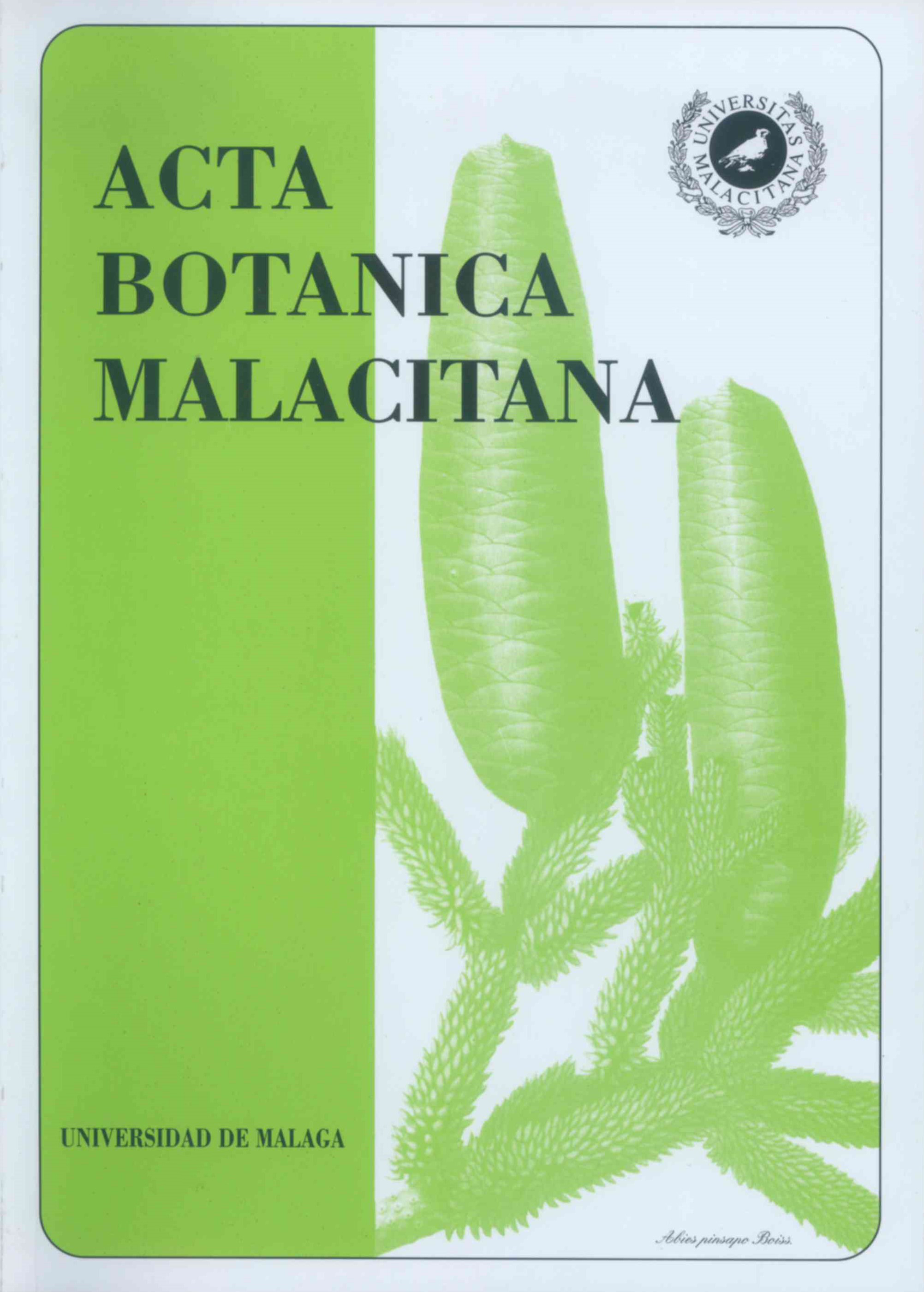Plantas para?sitas del centro de Argentina.
DOI:
https://doi.org/10.24310/abm.v28i0.7264Abstract
RESUMEN. Plantas parásitas del centro de Argentina. Este trabajo consiste en la identificación de las especies de plantas parásitas del centro de la Argentina. Se incluye una clave diferencial para las mismas e ilustraciones. Se han identificado 8 especies parásitas distribuidas en 5 familias y 8 géneros, las que representan aproximadamente el 0.6 % de la flora vascular de esta región. Cuatro especies parasitan a plantas leñosas y las restantes parasitan hierbas. La mayor cantidad de especies huéspedes se encuentran en la familia Leguminosac.
Palabras Clave. Plantas parásitas, Flora, Argentina.
SUMMARY. Parasitic flowering plants of central Argentina. In this contribution a synopsis of the whole species of Parasitic flowering plants from central Argentina, is presented. In this area 8 taxa belonging to 5 families and 8 genera, that represent 0.6 % of the regional flora, have been found. A key based in vegetative and reproductive characters, and illustrations of all species are included. Trees are host of four species, others have been found associated with herbs. Leguminosae is the main host family.
Key words. Parasitic plants, Flora, Argentina.
Downloads
Metrics
Downloads
Published
How to Cite
Issue
Section
License
All information related to the licensing of published works in Acta Botanica Malacitana and copyright can be found in our Editorial Policy.







1.png)
